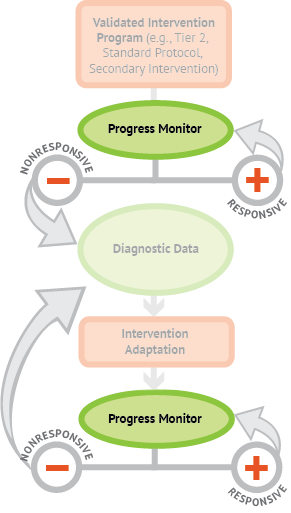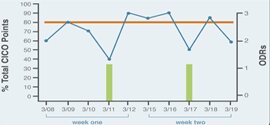Progress Monitoring
Progress Monitoring

Progress monitoring, a key component of a multi-tiered system of support (MTSS), occurs throughout the data-based individualization (DBI) process to assess responsiveness to the validated intervention platform, as well as adaptations to the intervention.
Prior to delivering the validated intervention platform, intervention teams should develop a progress monitoring plan that outlines the progress monitoring tool, student goal, and frequency of data collection and review.
During delivery of the validated and adapted intervention, educators should collect and graph frequent progress monitoring data.
After sufficient data are collected, they are graphed and evaluated against the student’s instructional or behavioral goal to determine whether the student is making sufficient progress. If so, the teacher continues to implement the validated or adapted intervention. If the student’s progress is insufficient, the teacher consults with a team to determine how to further intensify the intervention. This cycle repeats regularly throughout the DBI process, with adaptations to the intervention indicated using phase change lines on the progress monitoring graph.
Progress monitoring data also may be reviewed along with other diagnostic data to assist teams in developing a hypothesis about why the student may not be responding. As part of the diagnostic data review, the team may conduct an error analysis or look for other trends in the progress monitoring data.





